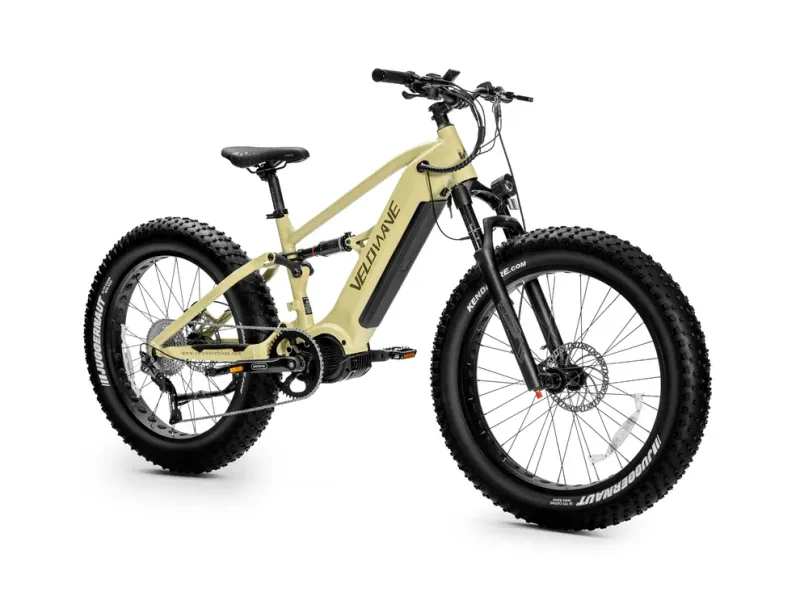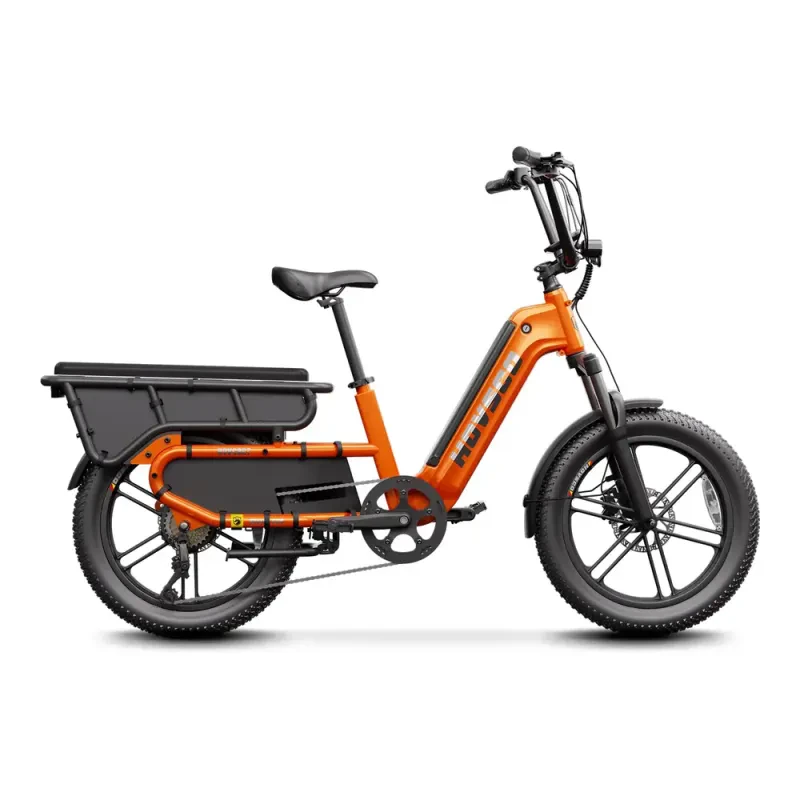What Are Solar-Powered Electric Bikes?
Definition and key features
Solar-powered electric bikes combine green technology with innovation. They use solar panels to convert sunlight into electricity for their motors. This reduces the need for traditional charging and supports eco-friendly travel.
These bikes also have smart battery systems for better energy use. They are made light and aerodynamic for easy rides. Riders can track their energy use and plan their routes with smart tech.
How they differ from traditional electric bikes
Solar e-bikes are a big step up from regular e-bikes. They use the sun's energy for power. This makes them a green choice and lets riders go further without needing to charge.
They also come with cool tech that makes them more efficient. This tech adapts to how much sunlight is available and how the rider uses the bike. It's perfect for those who want to live greener and travel farther.
How solar panels integrate into the design
Adding solar panels to e-bikes is a game-changer for looks and function. Designers are making sleek bikes with solar cells hidden in the frame or battery. This can help them look better and protect the panels.
Brands are making solar attachments that can be changed up. This lets riders adjust their bike for different rides, making solar e-bikes even more appealing.
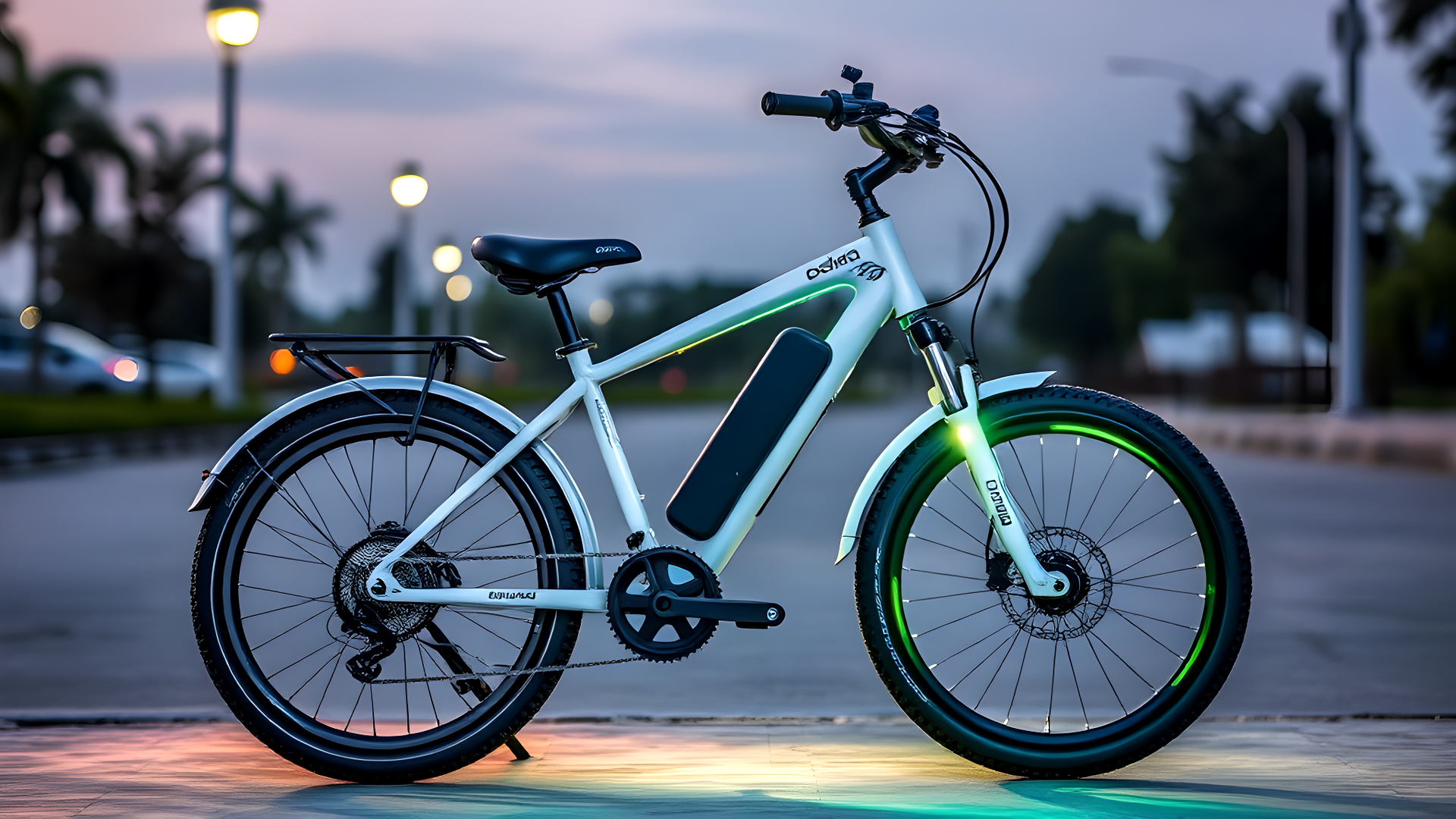
How Do Solar-Powered Electric Bikes Work?
The role of solar panels in charging the battery
Solar panels make electric bikes more practical by charging their batteries in a green way. They offer a new way to charge, unlike using grid electricity. This method lets riders use the sun's power while they ride, extending their range and saving on energy costs.
Imagine riding through a beautiful area with the sun out. Your bike's solar panels turn sunlight into energy for your ride. This makes biking more fun and sustainable.
Today's panels are better and lighter, fitting easily into new designs. They can be in the frame or even the saddle, keeping it looking good while capturing more energy. Even when stopped, your bike keeps charging, making it great for city rides or weekend trips.
As solar energy gets easier to use, these bikes could change how we travel. They encourage us to choose greener ways to get around.
Energy conversion and efficiency rates
How well solar panels work is key to solar bikes' success. They use the sun's power, not just human effort or grid electricity. This cuts down on fossil fuel use and uses more energy when it's sunny.
But making the most of this energy is tough. Things like the bike's weight and battery size affect how well it works. A good bike can go far and charge fast, making it great for daily rides or fun trips.
As bike makers improve materials and energy use, solar bicycles could become more common. This could change how we move around cities, making it greener and more sustainable.
Types of solar integration (built-in panels vs. portable chargers)
Built-in solar panels and portable chargers have their own benefits and drawbacks. Built-in panels look good and charge continuously, but they might not be as efficient because of size limits. They're perfect for those who want something easy and stylish.
Portable chargers, on the other hand, offer flexibility. They can charge bikes anywhere there's sunlight, great for long trips or off-road adventures. But, they might not be as convenient for those who prefer a simpler setup.
Choosing between built-in panels and portable chargers depends on what you value most. Do you want something easy and stylish, or something flexible for different situations?
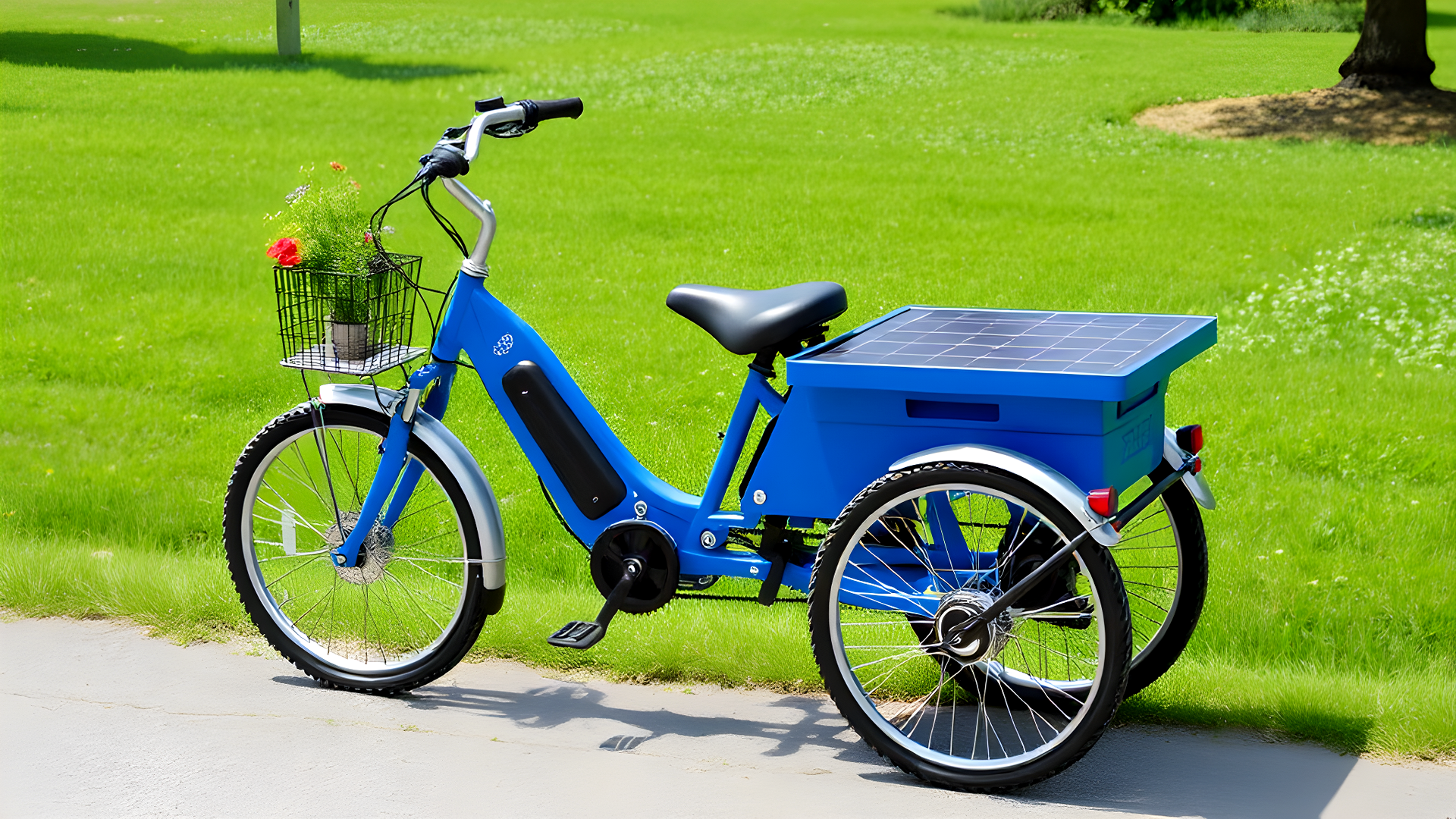
Benefits of Solar-Powered Electric Bikes
Environmental advantages: Zero emissions and renewable energy
Solar-powered electric bikes are good for the planet because they don't pollute. They don't release harmful gases like cars do. Instead, they use the sun's energy quietly and cleanly.
This change helps cut down greenhouse gases and makes cities cleaner. It also improves air quality, helping people breathe better.
Using energy in bikes changes how we think about power. It shows we don't always need fossil fuels. This move towards renewable energy makes us more independent and helps the planet.
As more people choose solar bikes, we move towards a greener future. It inspires us to use cleaner technologies and care for our environment more.
Cost savings on electricity and fuel
Switching to a solar bike saves money on electricity and fuel. With energy costs rising, using the sun's power can cut down your bills. You can save money for other things, like traveling or hobbies.
Electric bikes are also cheaper to run than cars. They don't need fuel, so you save on gas. They also need less maintenance, saving you money on repairs.
This change can save a lot of money and help the environment. It shows that being practical and green can go together.
Extended range with sunlight charging
This technology is making electric bikes even better. It lets you ride longer without needing to recharge. You can use sunlight while parked or pedaling, making your rides endless.
This technology also makes off-grid adventures possible. Imagine exploring without worrying about running out of power. Solar charging lets you enjoy nature more while being eco-friendly.
As technology gets better, we'll see even more improvements. Bikes will be lighter and more efficient, making rides even more appealing. The future of biking is bright, powered by the sun.
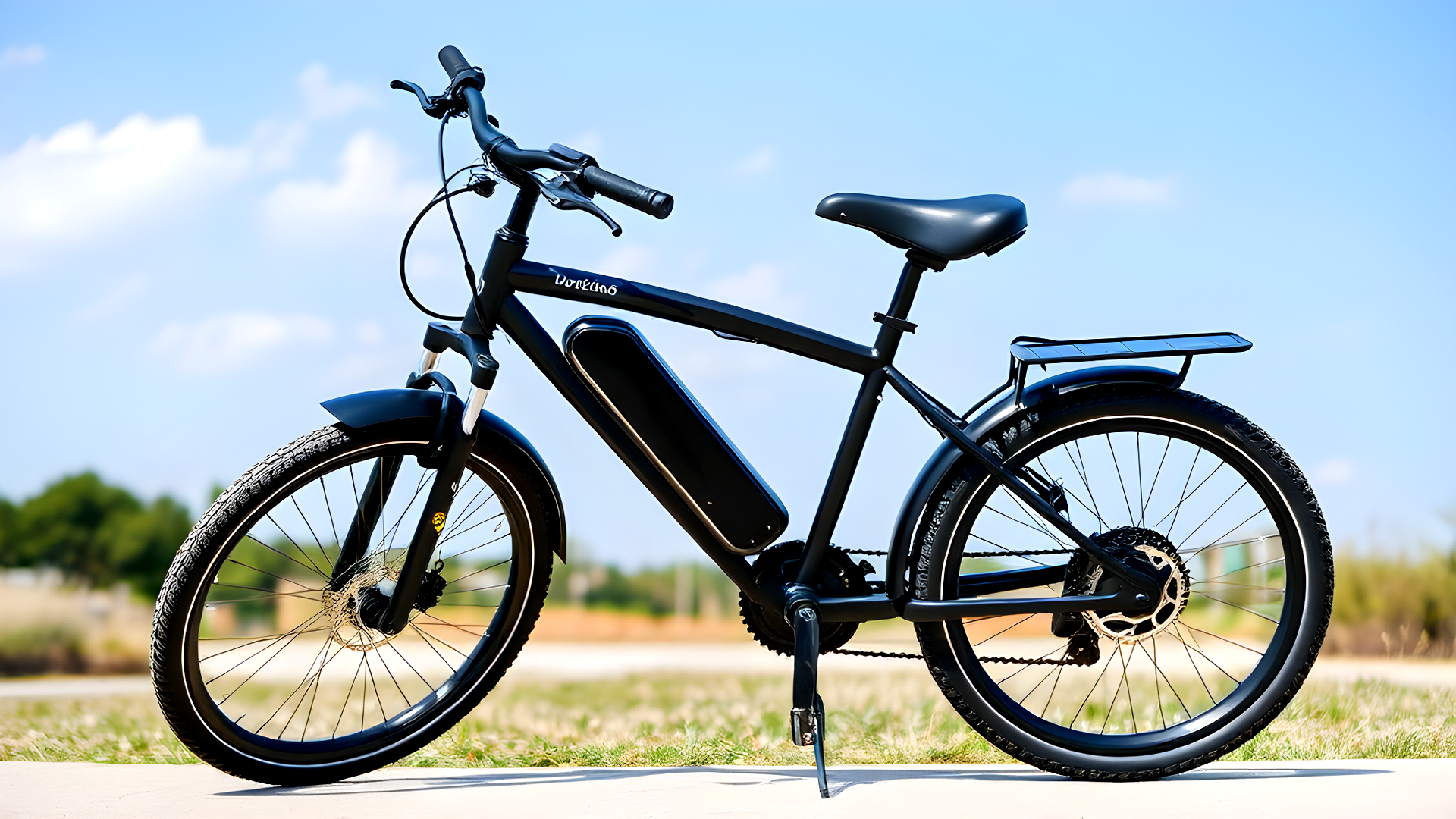
Challenges and Limitations
Efficiency issues: How much energy can solar panels generate?
Panels on bikes aren't perfect, but they're getting better. They can turn about 15-22% of sunlight into energy. But, things like how the panels are set up and the weather can help a lot.
Using high-efficiency panels can make a big difference. It means you can charge your bike even on cloudy days. This makes solar electric bicycles a great option for city rides.
Imagine a bike that charges as you ride. It's a green way to travel, making your rides longer and cleaner. As tech improves, we'll see even better options.
Dependence on weather conditions and sunlight availability
The use of solar-powered electric bikes depends a lot on the weather and sunlight. In sunny places, bikes can charge up easily. But in cloudy areas, it can be harder to get enough power. This makes us wonder: Can we make solar e-bikes that work well in different light conditions?
One solution could be energy storage systems. These systems can store power for when it's cloudy. This way, riders can always have a charge ready.
Weather also affects how we use renewable energy. Imagine planning bike rides when the sun is out or using weather forecasts to plan your day. This not only helps the planet but also connects us more with nature.
As we work on these challenges, solar e-bikes could change how we see renewable energy. They could become more than just a way to get around. They could be a choice that shows we care about the planet.
Cost of technology: Are they worth the investment?
When thinking about solar panels for bikes, durability is key. These panels must handle daily use and weather like rain and sun. Thanks to new materials, solar cells are getting stronger, cheaper, and lasting longer.
But even the toughest panels can get damaged if hit hard. Riders need to be careful to avoid accidents.
Durability and weight concerns with integrated solar panels
Solar panels on bikes need to be strong for daily use and weather. New materials like advanced polymers and tempered glass are making panels stronger.
But, even with these improvements, panels can be weak if not made right. This is why design and quality are so important.
Another issue is the bike's weight. These panels add extra weight. This can make the bike harder to handle, mainly in hilly areas or on long rides. As technology improves, solar bikes might become lighter and more practical for daily rides
Finding the right balance between strength and weight is key to making solar bikes a success.
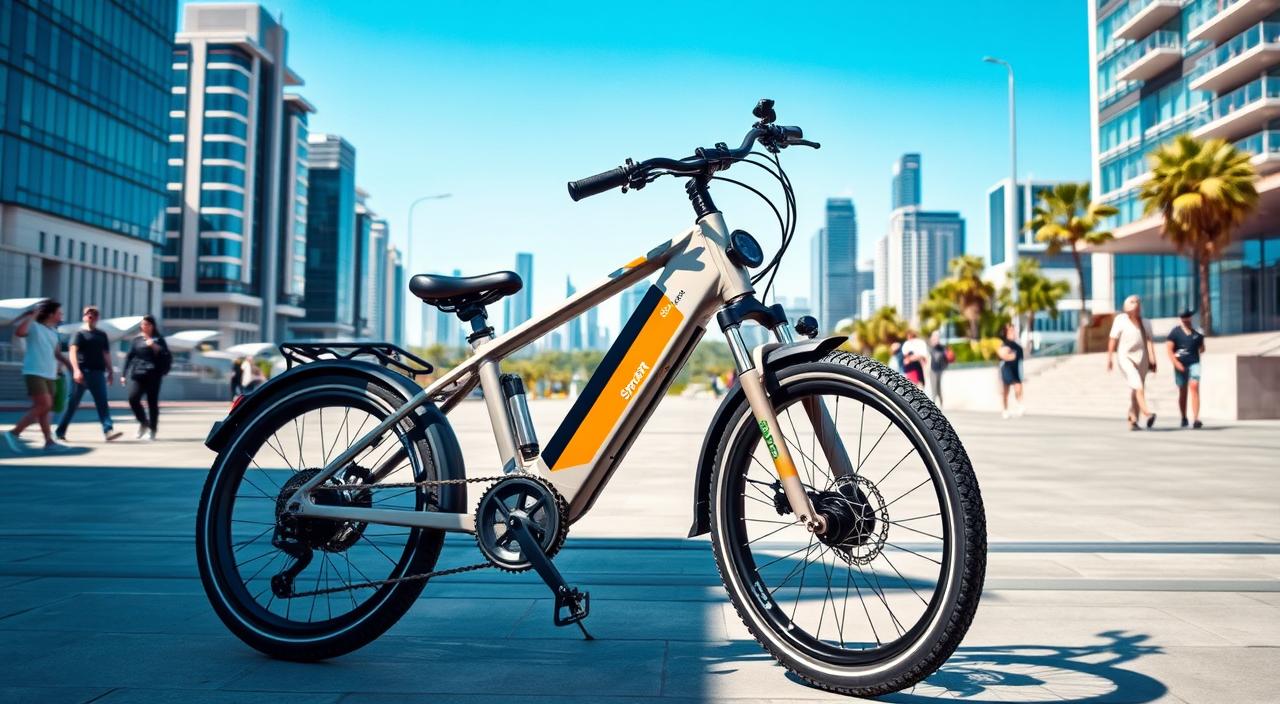
Innovations in Solar-Powered E-Bike Technology
Recent breakthroughs improving efficiency
New advancements in battery technology and solar panels are changing e-bikes. They are now more efficient and practical. For example, new lithium-sulfur batteries are lighter and hold more charge, letting riders go further without worrying about running out of power.
Also, solar panels are getting better at turning sunlight into energy. Even a little sunlight can charge the bike's battery, giving every ride a chance to generate green energy.
Smart tech is also playing a big role. AI and machine learning help these bikes adjust to the environment. They can change power based on the terrain, weather, and how the rider is using it. This makes the ride better and saves energy.
As technology improves we'll see more eco-friendly ways to get around. The future looks bright for those who want to ride in a green way.
Lightweight materials
Hybrid systems that use both solar and traditional charging are a new idea. Imagine riding your bike while it charges from the sun. This means you can ride longer without needing to plug it in.
These systems are great for city riders who don't have easy access to charging spots. They can charge while parked or even while moving. This makes eco-friendly travel easier and encourages a greener lifestyle.
As tech gets better, we might see even more smart features. These could help riders charge their bikes based on the weather and sunlight. This could make electric bikes a better choice for more people.
Hybrid systems combining solar with traditional charging
Hybrid systems are a big step forward for electric bikes. They use solar panels and can also be charged from a plug. This makes electric bikes more versatile and solves problems with relying only on solar power.
Studies show these systems can be more efficient and cut down on pollution. They also let riders charge their bikes in different ways, making them more independent. This is good for the environment and meets the needs of users.
Are Solar E-Bikes Practical for Daily Use?
Ideal scenarios and use cases
Imagine a city where people use solar-powered e-bikes instead of cars. This would reduce pollution and make traffic better. These bikes are perfect for city living, making it easy to get to work or run errands.
They're also great for weekend trips to parks. With strong batteries charged by the sun, riders can explore without worrying about running out of power. This makes outdoor adventures more accessible and eco-friendly.
Challenges for urban and rural riders
Urban and rural riders face unique challenges. In cities, the fast pace and crowded streets make riding hard. Riders deal with unpredictable weather and limited bike lanes.
City riders often need to stop and start a lot. This uses up power quickly. Rural riders have their own problems. The long distances mean fewer charging spots. Uneven roads and theft are also big issues. Both city and country riders need solutions that fit their needs. This means finding ways to use solar power better in different places.
But, solar e-bikes have some downsides. The weather and where you live can affect how well they work. They also cost more upfront than regular e-bikes.
Yet, as tech gets better and prices drop, they could become more common. This could change how we move around cities. It's not just about how they work, but also about caring for the planet.
What’s the Future of Solar-Powered Electric Bikes?
Trends in green transportation and renewable energy adoption
Green transport is key for sustainable cities. Solar e-bikes offer a clean way to get around. They show how renewable energy is becoming more popular.
Lighter solar panels and better batteries make e-bikes more efficient. This lets riders charge on the go and cut down on pollution.
Smart tech in e-bikes is also improving. It helps riders use more solar power and find the best routes. As cities add more charging spots and bike lanes, solar e-bikes will become even more appealing.
This mix of new transport ideas and green energy is exciting. It lets people choose a sustainable way to travel in cities. The future of getting around is about being green and efficient.
Predictions for advancements in affordability and technology
Future tech and price drops will change the solar e-bike market. Better solar panels will mean longer rides without needing to charge. This makes solar e-bikes more useful for daily trips.
Imagine solar cells that fit right into the bike's design. They capture energy all day, so you can go on spontaneous rides without worrying about running out of power.
As manufacturing gets better, parts will cost less. This means more people can buy solar e-bikes. Urban planners might add special charging spots in public areas. This makes them more convenient and appealing.
With more demand, new ways to pay could come up. This could include subscription services. It's a win for the environment and your wallet. This mix of green and affordable is revolutionizing the way we move around cities.
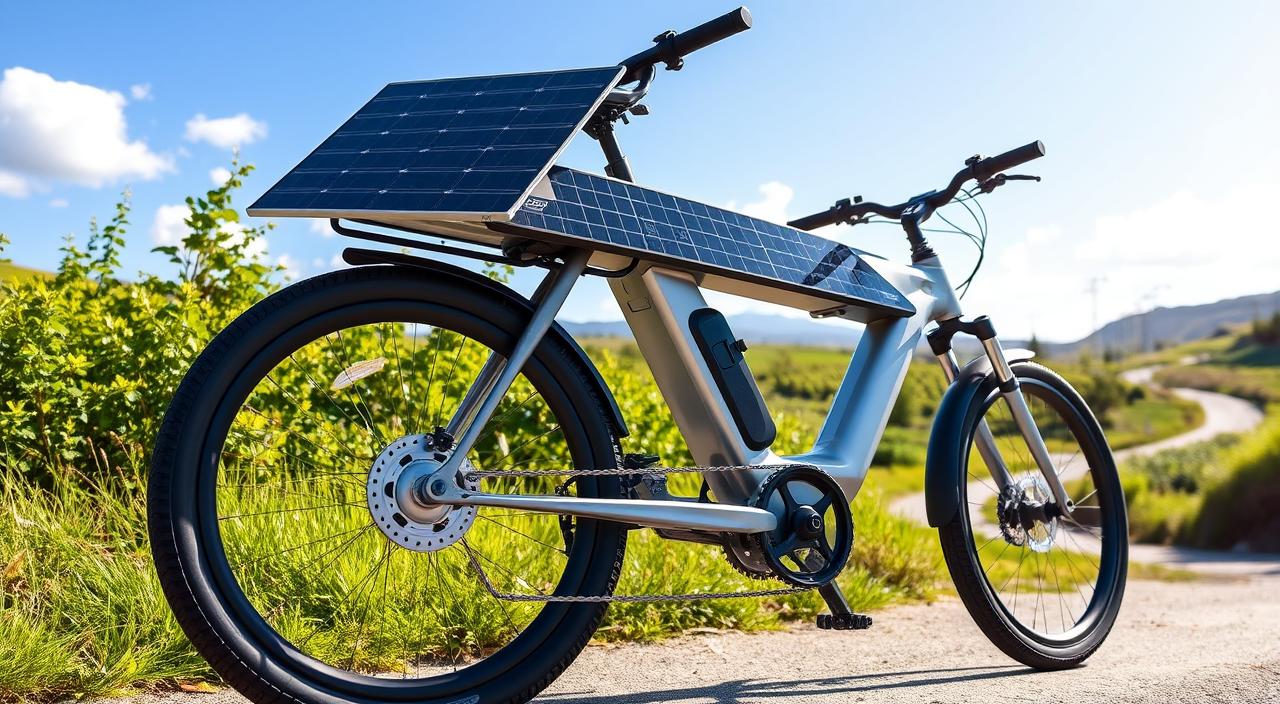
Role of Government Incentives in promoting solar e-bikes
Government help is key to making solar e-bikes popular. Tax breaks, rebates, and grants help lower costs. This boosts demand for green tech.
These incentives also push companies to make better quality options. They become more efficient and easy to get. It's a win-win for everyone.
Government support also leads to community efforts. Local programs offer free charging spots and special bike lanes. These perks will make them more practical and popular.
As more people use solar e-bikes, benefits grow. We see less pollution, less traffic, and better health. It's a strong reason to use solar e-bikes everywhere.
Key Takeaways
- Offer a sustainable mobility solution for individuals and companies.
- Can reduce emissions and lower operating costs.
- Are becoming a popular choice for those looking for eco-friendly transportation.
- Solar-powered e-bikes can be charged 100% by solar power, making them a viable option for remote charging capabilities.

